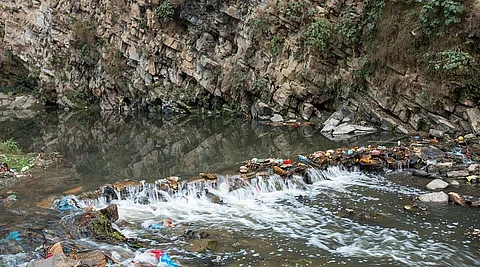

Leading beach tourism destination in India, is confronting a major environmental challenge. The Goa State Pollution Control Board (GSPCB), in its 2024–25 annual report, has flagged serious contamination in both sea and river waters across the state, endangering public health and jeopardizing its tourism-driven economy.
Beaches including Miramar, Calangute, Morjim, Vagator, Arambol, Baga, Colva, Benaulim, Palolem, and others have been found to be highly polluted. Several key rivers—Mandovi, Zuari, Mapusa, Tiracol, Sinquerim, Sal, and the Cumbharjua canal—have also been deemed unsafe for fishing or recreational use.
Tests conducted from March 2024 to March 2025 revealed faecal coliform levels ranging from 500 to 1100 MPN per 100 ml, far exceeding the Central Pollution Control Board (CPCB) safety threshold of 100 MPN/100 ml for recreational water use. Biochemical Oxygen Demand (BOD) levels ranged from 1.9 to 2.9 mg/L, above the 1 mg/L limit, indicating high organic pollution. Though Dissolved Oxygen (DO) levels stayed within acceptable limits (6–8 mg/L), the presence of pathogens and organic load renders the water unsafe.
The primary sources of pollution include the discharge of untreated or poorly treated sewage, plastic waste accumulation, and unchecked urban development. Both GSPCB and CPCB reports consistently link the contamination to human and animal waste entering water bodies.
The presence of disease-causing pathogens makes the water unsafe for bathing, water sports, and fishing—posing serious health risks such as gastrointestinal infections and skin conditions. The pollution also threatens the image of Goa as a clean and desirable tourist destination, with economic implications for communities reliant on tourism.
The GSPCB has classified affected areas as ‘SW II’, meaning unfit for recreational use. Local NGOs and environmental activists are calling for immediate upgrades to sewage treatment facilities, stricter enforcement of pollution laws, and widespread public awareness efforts to restore Goa’s water quality.